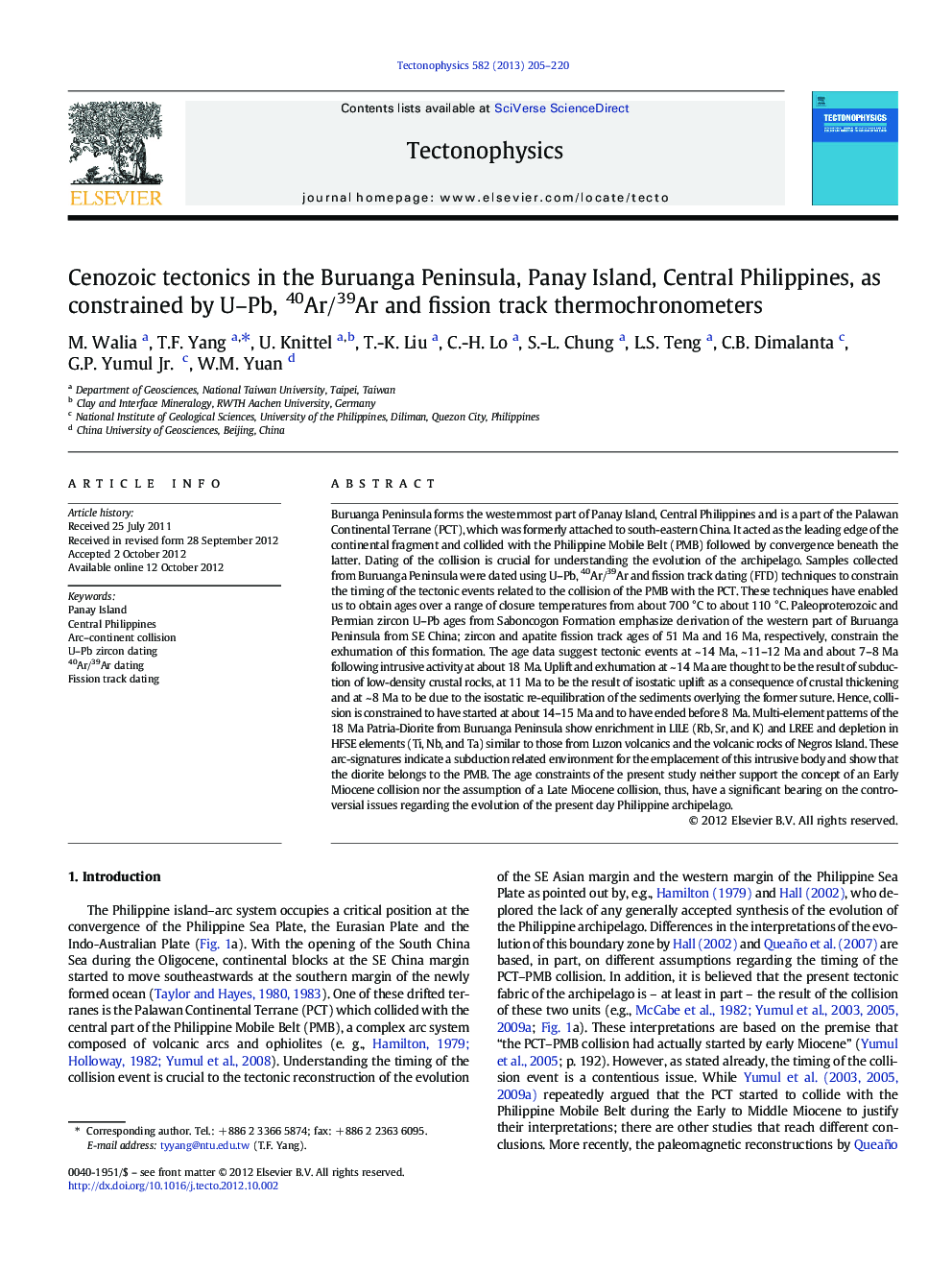| کد مقاله | کد نشریه | سال انتشار | مقاله انگلیسی | نسخه تمام متن |
|---|---|---|---|---|
| 4692533 | 1636803 | 2013 | 16 صفحه PDF | دانلود رایگان |

Buruanga Peninsula forms the westernmost part of Panay Island, Central Philippines and is a part of the Palawan Continental Terrane (PCT), which was formerly attached to south-eastern China. It acted as the leading edge of the continental fragment and collided with the Philippine Mobile Belt (PMB) followed by convergence beneath the latter. Dating of the collision is crucial for understanding the evolution of the archipelago. Samples collected from Buruanga Peninsula were dated using U–Pb, 40Ar/39Ar and fission track dating (FTD) techniques to constrain the timing of the tectonic events related to the collision of the PMB with the PCT. These techniques have enabled us to obtain ages over a range of closure temperatures from about 700 °C to about 110 °C. Paleoproterozoic and Permian zircon U–Pb ages from Saboncogon Formation emphasize derivation of the western part of Buruanga Peninsula from SE China; zircon and apatite fission track ages of 51 Ma and 16 Ma, respectively, constrain the exhumation of this formation. The age data suggest tectonic events at ~ 14 Ma, ~ 11–12 Ma and about 7–8 Ma following intrusive activity at about 18 Ma. Uplift and exhumation at ~ 14 Ma are thought to be the result of subduction of low-density crustal rocks, at 11 Ma to be the result of isostatic uplift as a consequence of crustal thickening and at ~ 8 Ma to be due to the isostatic re-equilibration of the sediments overlying the former suture. Hence, collision is constrained to have started at about 14–15 Ma and to have ended before 8 Ma. Multi-element patterns of the 18 Ma Patria-Diorite from Buruanga Peninsula show enrichment in LILE (Rb, Sr, and K) and LREE and depletion in HFSE elements (Ti, Nb, and Ta) similar to those from Luzon volcanics and the volcanic rocks of Negros Island. These arc-signatures indicate a subduction related environment for the emplacement of this intrusive body and show that the diorite belongs to the PMB. The age constraints of the present study neither support the concept of an Early Miocene collision nor the assumption of a Late Miocene collision, thus, have a significant bearing on the controversial issues regarding the evolution of the present day Philippine archipelago.
► Panay Island in the Central Philippines is composed of two different terranes.
► Buruanga Peninsula is continental while in east the Antique Range has arc affinity.
► U–Pb, 40Ar/39Ar and fission track dating constrain the timing of tectonic events.
► Intrusion of diorite in Buruanga is recorded at around 18 Ma.
► More than one collision events shape the present Philippine archipelago.
Journal: Tectonophysics - Volume 582, 2 January 2013, Pages 205–220